For the past decade, there has been advocacy against the use, or overuse of antibiotics in livestock including chicken due to its contribution to drug resistance in humans.
Consequently, people are now aware of what they eat knowing that most commercial chickens are loaded with synthetic drugs which may be detrimental to their health in general.
Considering the prevailing situation, you may want to raise your own chickens for healthy meat and eggs. Chickens can be raised for meat and egg purposes.

Male (cock) broiler meat chicken
The chicken raised for meat is known as meat chicken, they are different meat chicken breeds (we shall consider them later in this post). While chickens raised for meat and eggs are known as dual-purpose chickens.
In this post, I am going to walk you through how to raise a healthy meat chicken in your backyard flock- from selecting the meat chicken breed of your choice to raising them and eventually freezing them for your household.
This post is going to be a long one, so get a cup of tea, or coffee as we get down to business.
1.What is Meat Chicken?
Chickens that are specifically raised for meat are known as meat chicken. There are several meat chicken breeds, but the most common breed raised for meat production is the broiler breed.
Broilers are highly demanded meat chickens because they grow rapidly compared to other chicken types met for egg production.
Within a period of just 5 weeks, broiler chickens can weigh around 4-5 pounds (1.8kg – 2.2kg) and by 10 weeks old, they can easily reach 10 pounds, (4.5kg).
This makes raising and breeding broilers meat chicken the fastest way to get your return of investment if you are into the chicken business, and also suits families who wish to get a healthy and delicious protein chicken.
Next, is selecting your meat chicken breed. Apart from the popular broiler breed, they are other good meat chicken breeds in the market. I am going to list the best 5 meat chicken breeds you can choose from for your backyard flock.
5 Best Meat Chicken Breeds for your Backyard Flock
1.Cornish Cross

Cornish cross
Cornish cross is a widely know meat chicken, mainly because of its use in commercial meat production.
This chicken grows very fast, reaching about twelve pounds in barely 6 weeks.
They are endowed with great taste with large thighs, legs, and breasts.
One problem you will be facing with this breed is that they are voracious eaters. They eat a lot to keep up their rapid growth.
Weight (male) : 12Ibs
Weigh (female) : 8Ibs
Harvest Time : 4-6 week
Pros & Cons: Fast growth, lot of white meat, Eat a lot
Variants: White
2.Jersey Giant
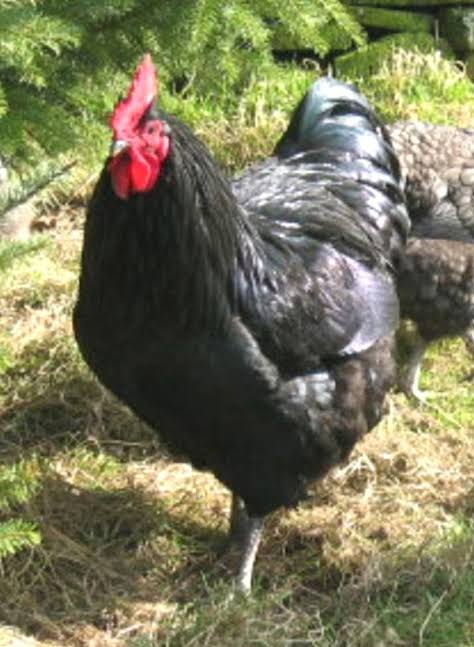
The Jersey Giant was created in the United State as a potential replacement for the turkey.
These birds are purebred, meaning you can breed them on your farm, while they grow at a relatively slow pace, they produce an appreciable amount of meat.
Although, commercial poultry farmers don’t fancy Jersey Giants as Cornish Crosses, mostly due to its very slow feed conversion rate- Without doubt, they will end up growing bigger, just that it will take them more time.
Having said that, Jersey Giants are less prone to diseases as are Cornish Cross chickens, plus they lay eggs too, which is also a bonus to meat.
Weight (male): 13 Ibs
Weight (female) :10 Ibs
Harvest time:16-21 weeks
Pros and cons: Big slow growth
Variants Blue, black and white
3.Bresse
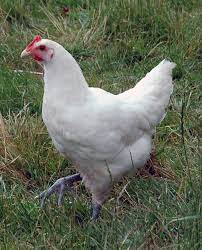
Bresse is another excellent meat chicken, with fairly large size. With its attractive features of blue feet, white body, and bright red comb, some people refer to it as the France flag chicken, which makes it, probably, fall on the expensive side.
Notwithstanding, you can still go for it despite its cost because you can recoup your expenses as they are good breeders.
The Bresse is popular for being the best meat-tasting chicken in the world in addition to its tenderness. They come in different colors like white, black, grey, and blue- the blue feet, white body, and red comb blind is more demanded.
Weight (male) : 10 Ibs
Weight (female): 8 !bs
Harvest time : 18 – 19 weeks
Pros and cons" Great egg layer, Docile, Slow growth
Variants: Buff, black, blue, white
4.Freedom Rangers
.jpg)
Freedom Rangers are meat chickens created for pasture life. And with it being one of the coolest meat chicken breeds to raise, and will be ready for butcher within the next nine weeks.
Also known as Red ranger, it has yellow fat skin, which adds extra flavor to its meat and lay brown eggs. This chicken is fun to watch as they scratch and the earth and forage for their daily meal.
Freedom Rangers won the hearts of organic farmers, because they are specifically bred for the pesticide free-meat, and can easily survive off bugs and grass.
However, with their well-endowed tasty meat, they don’t produce enough of it. They are less difficult to raise but have a slow growth pattern.
Weight (male) : 6Ibs
Weight (female) : 5Ibs
Harvest time : 9-11 weeks
Pros and cons: Suitable for-range, easy to raise, Smaller and slower growth rate
Variants: Red, tricolor, black
5.Orpington
The Orpington chicken is another well-known heavy meat chicken that grows up to an average weight of 7 – 8 pounds.
Orpingtons are dual-purpose birds, suitable for meat and eggs purposes. While they grow at a slower rate, they are excellent layers, producing up to 200 eggs annually.
They are have been endowed with a beautiful feature with a buff plumage, and a curvy shape along with a U – shaped Underline and a broad body.
Weight (male) : 10Ibs
Weight (female): 8Ibs
Harvest time: 18 -24 weeks
Pros and cons: Prolific egg layer, Docile, Slow growth
Variants: Buff, black, blue, and white.
Other wonderful meat chicken breeds areTurken (Naked neck), Egyptian Fayoumi, White Leghorn (And Brown), Buckeye, Chantecler. Although most are dual-purpose birds, they still make great meat chickens if you fatten them well.
3.How to Raise Meat Chicken
Meat chickens like broilers are delicate birds and raising them requires a different approach different from that use in raising your local chickens, or dual-purpose chickens.
Due to their rapid growth and fragile nature, you have to consider their stock density, ventilation, temperature, diet, water, lighting, and biosecurity. Negligence of any of these factors may put your meat chickens at health risk.
They are not hardy like other backyard chickens, so their welfare and management should be top-notch. Although this can be so tasking considering the time and resource you will invest in them, however, they don’t take long to reach table size.
Day-old chicks
i. How to brood Your Meat Chicken Chicks
Some once said a well-hatched chick is a half-raised chick, but a well-brooded chick is a full-raised chick. The brooding stage is a critical stage in the meat chicken chick’s life. It is the growth rate-determining stage, any mistake made at this stage will affect the chick’s performance.
At this stage, you have to act as the mother hen providing warmth and directing them to feed and drink.
Brooding can take up 2 to 3 weeks depending on the breed, then you can remove them from the brooder.
Here, to provide the necessary environment for your chicks, you have to build what is called a brooder. If you can make it out of carbon paper, cartons, plywood, etc, in a circular pattern preferably to avoid piling and also conserve the available heat.
It is pertinent you master the act of brooding meat chicken chicks for optimal performance. To learn more about brooding click here
ii. Meat Chicken Coop

A Simple DIY Chicken Coop
After brooding the next step is to transfer the chicks to a coop, and the size of the coop will depend on the number of birds.
Although, factory or commercial meat chickens like broilers are normally reared in a big barn with a deep litter system compare to chicken coops used for backyard meat chickens.
In providing a meat chicken coop you have to consider four basic requirements:
- Space
- Ventilation
- Light, and
- Protection (from weather and predation)
Space
Here, we are not considering nest space assuming you are not keeping them for egg, so the space recommendation will be for the floor and perching space alone.
Floor space: 4 -5m2/ birds, or 2.1 -2.7ft2
Perch space: 15-20cm (6-8 in)
Ventilation
Ventilation is paramount in the life of a meat chicken, it is a factor that cannot be neglected.
An ideal meat chicken coop or building should be cross-ventilated, having a vent or window across the coop.
Be aware of heat stress, it is a significant constraint to successful production and can lead to death. They don’t tolerate temperatures above 40 °C.
Use suitable coop bedding to avoid reflected heat from the ground. I find wood shaving most effective for my meat chickens. You can also use straw, sand, or pine.
Light Duration
A well-lit coop is important. A dark meat chicken coop leads to lethargy, inactiveness unproductiveness in your chicken. Light is important for feeding, as chickens identify food by sight.
This is very essential especially at the brooding stage where chicks need very bright 24-hour lighting for their first week of life.
Light is also an important factor in sexual maturity. An increasing light proportion in the day, as naturally observe from mid-winter to mid-summer, will speed up sexual maturity in growing pullets, bringing them to lay sooner.
Protection:
Several factors influence the type and choice of the coop that will protect your meat chickens from the effects of weather and predators. These include the local climate, the available space, the size of the flock, and the management system.
Traditional large animal fencing using live plants is not enough protection against predators such as snakes, kites, rats, raccoons, and other vermin.
A simple and effective system to discourage predator birds is to tie parallel lines of string across the most scavenging space, the intervals between that measure less than the predator’s wingspan; or, instead, a fishnet supported on poles is unfolded across the side of the run wherever predator birds may swoop on the scavenging chicks.
Leg traps are set for giant predators. it's not necessary to line traps around all the pens, as predators tend to attack an equivalent pen on the second night.
Also, reinforce your run with wire clothes or chicken wire to make it difficult for predators to get in.
Make sure you dig in the wire clothe deep enough around the coop and run, about 12 inches deep trench- they will have a hard time getting in.
The next consideration is how to feed your meat chicken, and what kind of feed do they eat.
Meat Chicken Feed

Pelletized feed
Generally, chicken feed is formulated not just based on the nutritional requirement of the type of bird, but also at various ages of the bird. So, for a meat chicken, just like every other bird, you have to nourish it with three types of feed at various stages. The types of feeds are:
- Starter
- Grower not necessary), and
- Finisher
For example, starter feed is given to baby chicks for about 3 to 4 weeks. It contains more protein than starch for proper growth and development.
The grower is given for 2 weeks (from week 5 to week 6)
While the finisher contains more starchy feedstuffs, and it is given from week 6 or 7 till the meat chicken is due for butchering
The feed texture can be in form of whole grains, crumble, mash or pellet. It all depends on your choice.
These feed types require different proportions of feed ingredients for proper development.
These proportions may be regarded as a guide
|
Classes of food |
Chicks |
Growing birds |
Layers |
|
Starch |
50-65% |
50-70% |
60-70% |
|
Proteins |
20-30% |
20-30% |
10-20% |
|
Minerals |
1.5% |
1.5% |
3-7% |
|
Other feedstuffs and additives |
to 100% |
To 100% |
To 100% |
Source: Poultry keeping in the Tropics
Meat Chicken Feeding Schedule
Meat chickens should be fed properly to avoid feed-related problems like leg paralysis as a result of being overweight and heart failure.
As you may have heard or known that some meat chickens like broilers add weights more than their legs can carry, therefore, develop lameness or leg paralysis, which is very difficult to cure.
You should seek the advice of an expert on the best way to feed your meat chickens to avoid leg problems.
I normally give my meat chickens calcium supplement at weeks 2 and 3 to help the legs shoulder the weight that will come later at weeks 5 and 6 (stage of rapid growth).
You can also add some natural growth boosters/antibiotics like garlic and ginger as a supplement instead of using synthetic drugs that can develop antibiotic resistance
In addition, during the hot season or summer, it is wise you feed your meat chicken when the weather is cooler (morning or evening).
Feeding them during hot weather will increase the chance of heatstroke, sudden death syndrome (SDS), rather give them cold treats like cold fruits watermelon, pawpaw, berries, etc. Then later in the evening, you can give them their evening ratio.
When to butcher meat chicken
Butchered broiler chicken
When to butcher meat chicken depends on the meat chicken breed and the individual choice.
However, Under intensive farming methods in the US, a chicken raised for meat will live for approximately 6 weeks before slaughter.
For instance. Broiler chickens are butchered at seven to nine-week of age, when they weigh 3 to 5 Ibs, dress as 2.5 to 4 Ibs. Carcass.
Note, it is uneconomical to keep some meat chicken like broiler beyond 8 weeks because their weight decrease as they age irrespective of the quantity of food they eat.
Meat Chicken Life Span
Generally, the life span of a chicken is between 5-10 years, although many breeds surpass this age range, especially those kept as a pet if allowed to live as a true chicken(grazing grass, scratching, pecking the earth, etc)
Nevertheless, the life span of a meat chicken is between as low as 5 weeks to 25 weeks, all depends on the breed.
For instance, some meat chicken like broiler has a shorter life expectancy ( 5 to 16 weeks) than the other breeds.
In some cases, a meat bird would have to have its feed carefully managed in order to get it past about 12 weeks old.
Where to buy Meat Chicken and Meat Chicken Prices
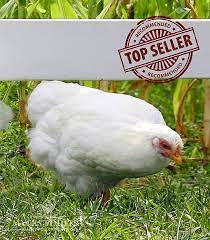
- You can shop for your quality meat chicken online @ Mayers Poultry. They offer a variety of broiler strains that can fit your specific need for the small or commercial market.
Their prices are customer-friendly.
They have the following strains of broilers;
- Cornish Cross- 4.5 to 6 Ibs in 6 to 8 weeks. The average price is between $2.65 – $1.41 per chick.
- Grey Broiler Mix: Gray birds resembling barred Rock, Live weight 5.4 -5.75Ibs in 9 weeks. Price is between $2.98-$1.55 per chicks
- Jackie: The red cross is more of a heritage broiler with slower grow out. 5-6 Ibs in 11-13 weeks. $1.90 -1. $20.
You can visit Mayers Poultry to see the rest of the broiler meat chicken strains with their prices.
- Another famous store where you can buy your meat is the Tractor Supply Co.
Tractor Supply Co. is the source for farm supplies, pet and animal feed and supplies, clothing, tools, fencing, and so much more. I doubt if there is anybody who is into animal husbandry or pet keeping who does not know Tractor Supply.
Their Meat chick prices are affordable with a surprise mixed box as a bonus.
Conclusion
So, we have learned that meat chickens are hybrid chicken created for the table. That is they are created for meat purposes and they have a rapid growth rate.
They are not suitable to be kept for long like other heritage backyard chickens.
They require welfare that is well managed. Any exposure to extreme temperatures can be detrimental to their health.
It is not advisable and uneconomical to keep meat chicken beyond 8 weeks.
I Wish a successful meat chicken keeping.
Share on Twitter Share on Facebook
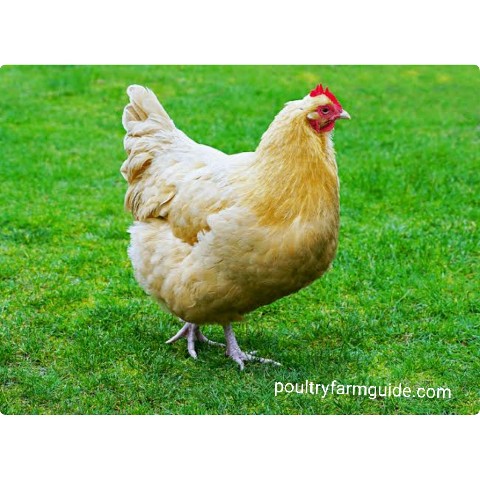
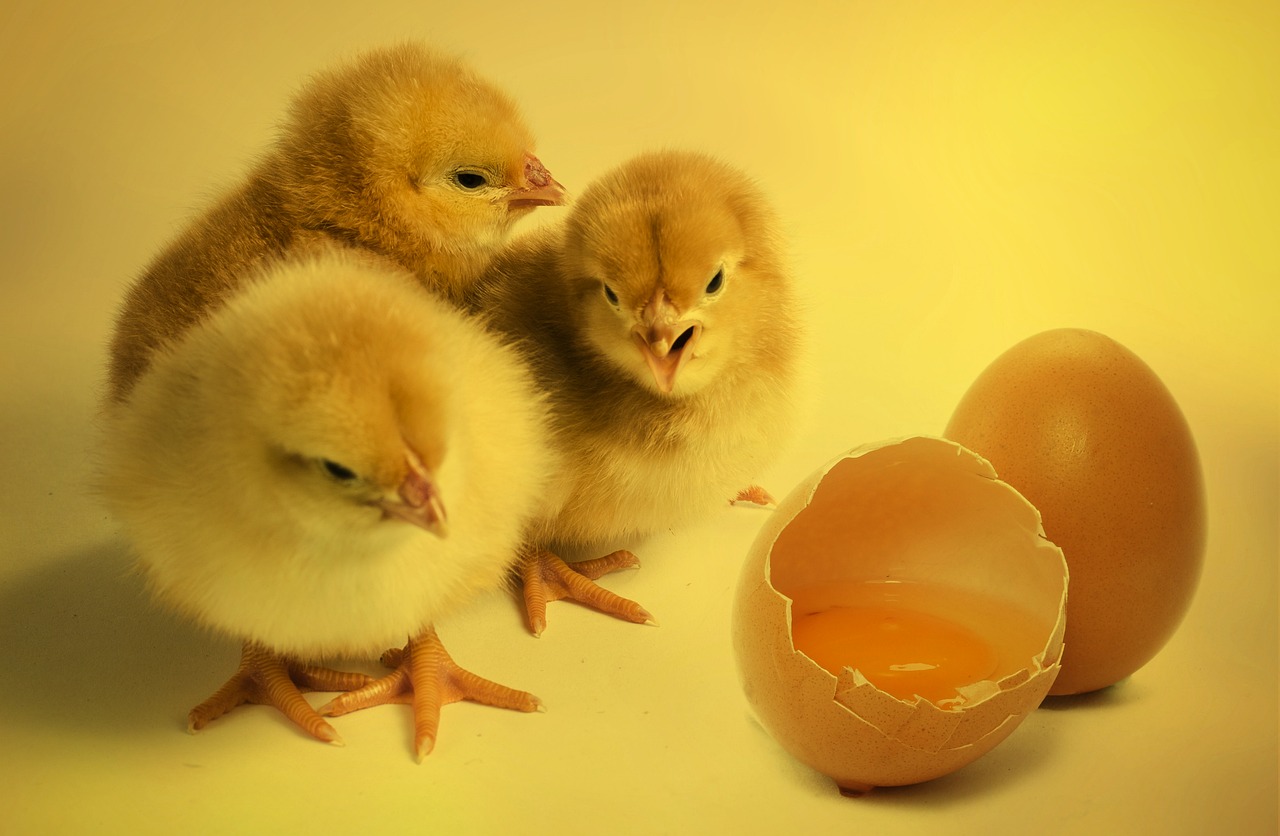
.jpg)
Comments
There are currently no comments
New Comment